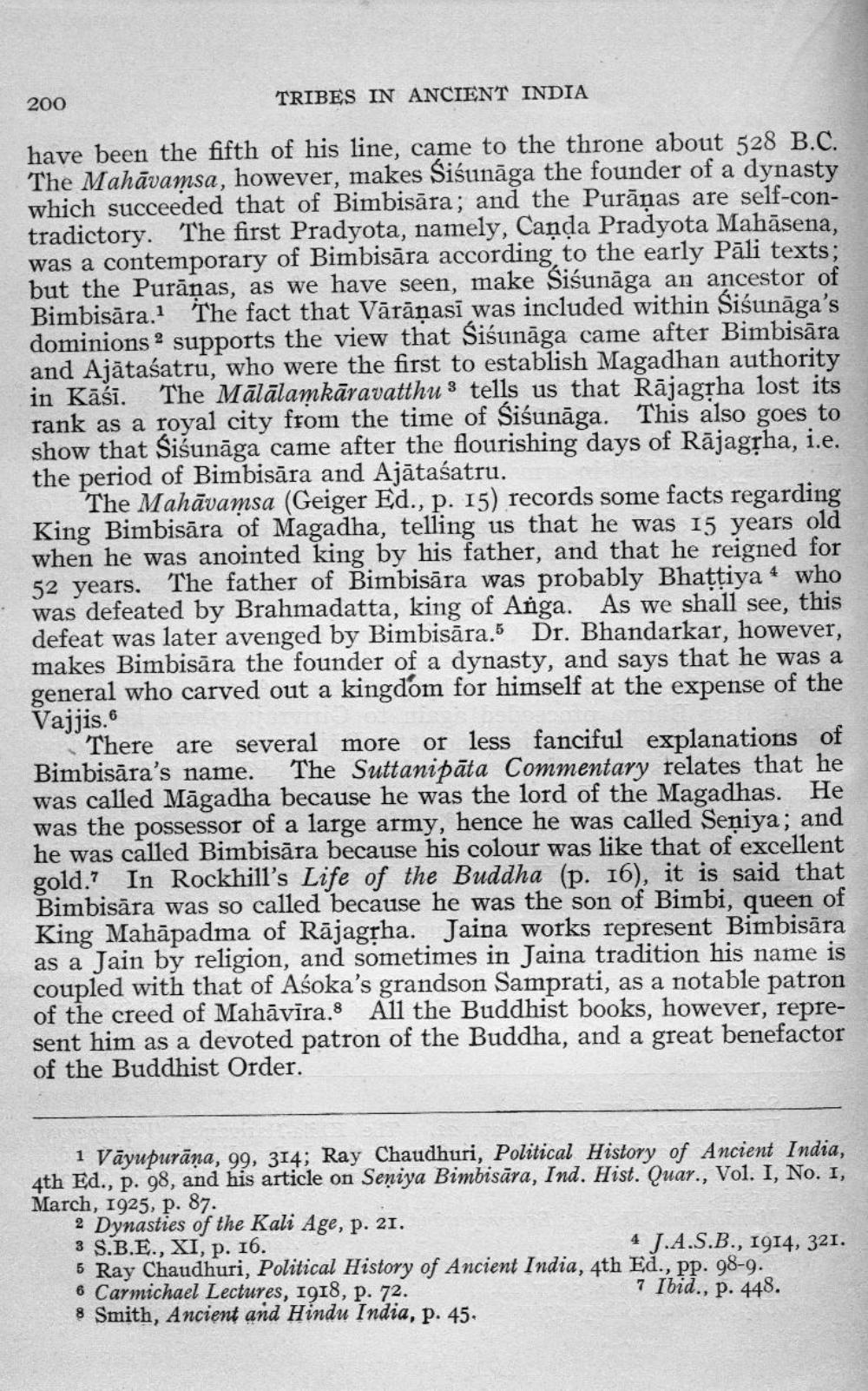________________
200
TRIBES IN ANCIENT INDIA
have been the fifth of his line, came to the throne about 528 B.C. The Mahāvamsa, however, makes Siśunāga the founder of a dynasty which succeeded that of Bimbisāra; and the Purāṇas are self-contradictory. The first Pradyota, namely, Caņda Pradyota Mahāsena, was a contemporary of Bimbisāra according to the early Pāli texts; but the Purāṇas, as we have seen, make Siśunāga an ancestor of Bimbisāra.1 The fact that Vārāṇasī was included within Sisunāga's dominions 2 supports the view that Sisunāga came after Bimbisāra and Ajātasatru, who were the first to establish Magadhan authority in Kāśi. The Mālālamkāravatthu 3 tells us that Rājagrha lost its rank as a royal city from the time of Siśunāga. This also goes to show that Siśunāga came after the flourishing days of Rājagļha, i.e. the period of Bimbisāra and Ajātaśatru.
The Mahāvamsa (Geiger Ed., p. 15) records some facts regarding King Bimbisāra of Magadha, telling us that he was 15 years old when he was anointed king by his father, and that he reigned for 52 years. The father of Bimbisāra was probably Bhattiya 4 who was defeated by Brahmadatta, king of Anga. As we shall see, this defeat was later avenged by Bimbisāra.5 Dr. Bhandarkar, however, makes Bimbisāra the founder of a dynasty, and says that he was a general who carved out a kingdom for himself at the expense of the Vajjis.
There are several more or less fanciful explanations of Bimbisāra's name. The Suttanipāta Commentary relates that he was called Māgadha because he was the lord of the Magadhas. He was the possessor of a large army, hence he was called Seniya; and he was called Bimbisāra because his colour was like that of excellent gold.? In Rockhill's Life of the Buddha (p. 16), it is said that Bimbisāra was so called because he was the son of Bimbi, queen of King Mahāpadma of Rājagrha. Jaina works represent Bimbisāra as a Jain by religion, and sometimes in Jaina tradition his name is coupled with that of Asoka's grandson Samprati, as a notable patron of the creed of Mahāvira.8 All the Buddhist books, however, represent him as a devoted patron of the Buddha, and a great benefactor of the Buddhist Order.
1 Vāyupurāna, 99, 314; Ray Chaudhuri, Political History of Ancient India, 4th Ed., p. 98, and his article on Seņiya Bimbisāra, Ind. Hist. Quar., Vol. I, No. 1, March, 1925, p. 87.
2 Dynasties of the Kali Age, p. 21. 3 S.B.E., XI, p. 16.
4 J.A.S.B., 1914, 321. 5 Ray Chaudhuri, Political History of Ancient India, 4th Ed., pp. 98-9. 6 Carmichael Lectures, 1918, p. 72.
7 Ibid., p. 448. 8 Smith, Ancient and Hindu India, p. 45.




